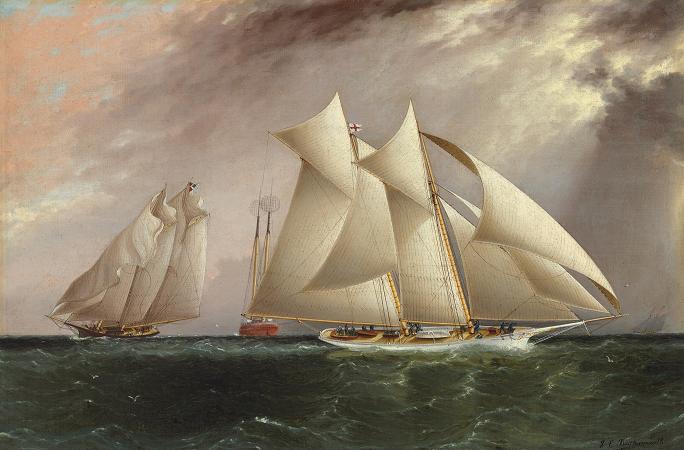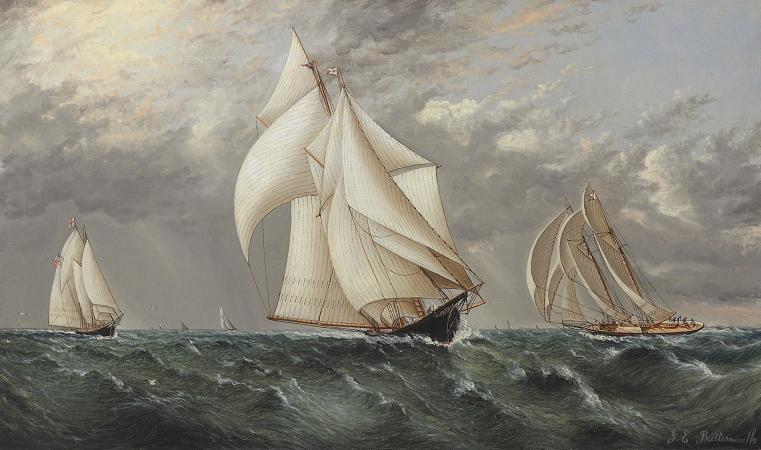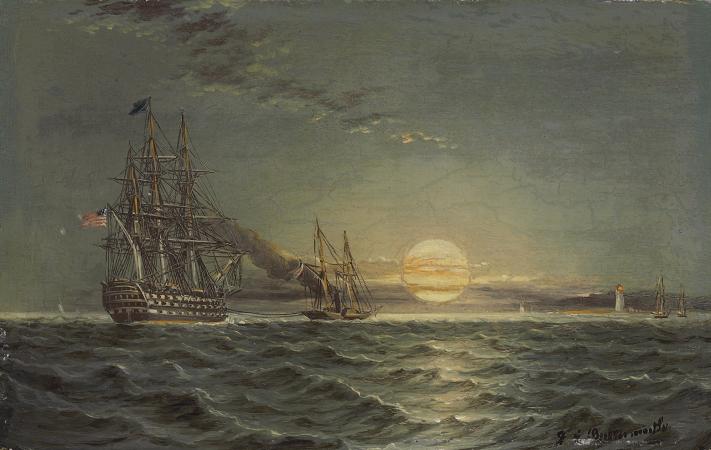Maritime Painting. Marine art or maritime art is any form of figurative art that portrays or draws its main inspiration from the sea. Maritime painting is a genre that depicts ships and the sea, a genre particularly strong from the 17th to 19th centuries. In practice the term often covers art showing shipping on rivers and estuaries, beach scenes and all art showing boats, without any rigid distinction-for practical reasons subjects that can be drawn or painted from dry land in fact feature strongly in the genre. Strictly speaking maritime art should always include some element of human seafaring, whereas marine art would also include pure seascapes with no human element, though this distinction may not be observed in practice. Ships and boats have been included in art from almost the earliest times, but marine art only began to become a distinct genre, with specialized artists, towards the end of the Middle Ages, mostly in the form of the ship portrait a type of work that is still popular and concentrates on depicting a single vessel. As landscape art emerged during the Renaissance, what might be called the marine landscape became a more important element in works, but pure seascapes were rare until later. Maritime art, especially marine painting-as a particular genre separate from landscape-really began with Dutch Golden Age painting in the 17th century. Marine painting was a major genre within Dutch Golden Age painting, reflecting the importance of overseas trade and naval power to the Dutch Republic, and saw the first career marine artists, who painted little else. In this, as in much else, specialist and traditional marine painting has largely continued Dutch conventions to the present day. With Romantic art, the sea and the coast was reclaimed from the specialists by many landscape painters, and works including no vessels became common for the first time. Vessels on the water have featured in art from the earliest times. The earliest known works are petroglyphs from 12,000 BCE showing reed boats in the Gobustan Petroglyph Reserve in modern Azerbaijan, which was then on the edge of the much larger Caspian Sea. Rock carvings and carved objects depicting ships have been found on several islands of the Aegean as well as mainland Greece, dating from 4,000 BCE onwards. Both men and gods are shown on river barges in Ancient Egyptian art; these boats were made of papyrus reed for most uses, but the vessels used by the pharaohs were of costly imported cedar wood, like the 43.6 m long and 5.9 m wide Khufu ship of c. 2,500. Nilotic landscapes in fresco in Egyptian tombs often show scenes of hunting birds from boats in the Nile delta, and grave goods include detailed models of boats and their crews for use in the afterlife. The central cult image in Egyptian temples was usually a small figure of the god, carried in a barge or barque. Ships sometimes appear in Ancient Greek vase painting, especially when relevant in a narrative context, and also on coins and other contexts, though with little attempt at a seascape setting. As in Egyptian painting, the surface of the water may be indicated by a series of parallel wavy lines. Ancient Roman painting, presumably drawing on Greek traditions, very often shows landscape views from the land across a lake or bay with distant land on the horizon, as in the famous Ulysses paintings in the Vatican Museums. The water is usually calm, and objects that are submerged, or partly so, may be shown through the water. The large Nile mosaic of Palestrina is a version of such compositions, with a view intended to show all the course of the river. From Late Antiquity to the end of the Middle Ages marine subjects were shown when required for narrative purposes, but did not form a genre in the West, or in Asian ink painting traditions, where a river with a small boat or two was a standard component of scholar landscapes. Marine highlights in Medieval art include the 11th century Bayeux Tapestry showing the Norman Invasion of England. From the 12th century onwards, seals of ports often featured a ship portrait. The ship functioned as an image of the church, as in Giotto's lost Navicella above the entrance to Old St Peter's in Rome, but such representations are of relatively little interest from the purely marine point of view. A distinct tradition begins to re-emerge in Early Netherlandish painting, with two lost miniatures in the Turin-Milan Hours, probably by Jan van Eyck in about 1420, showing a huge leap in the depiction of the sea and its weather.
more...














